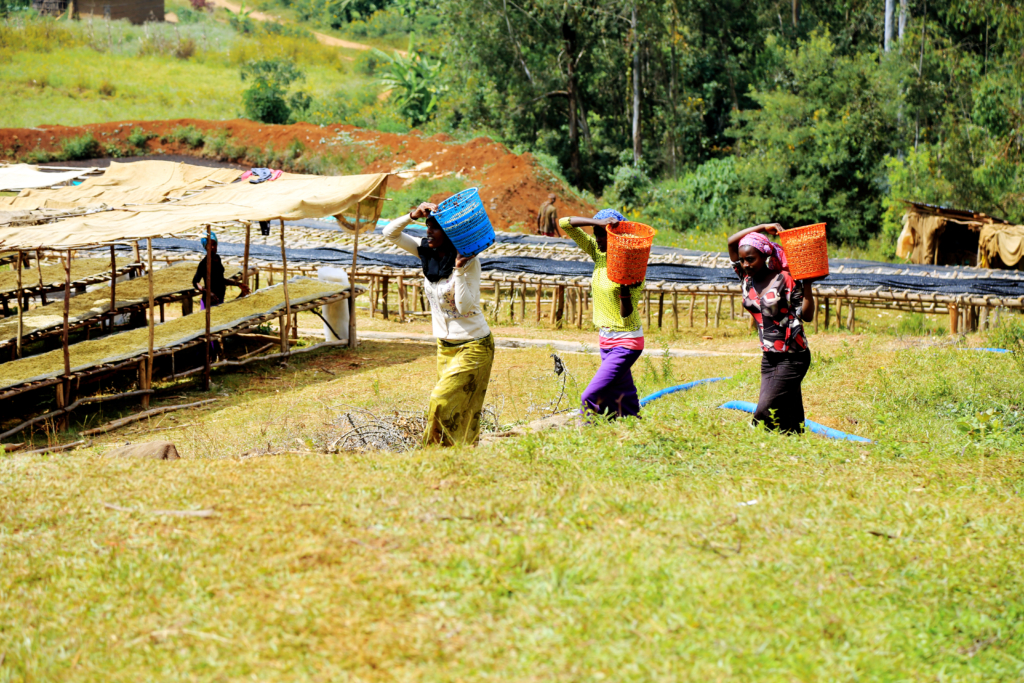Looking Past Profits In The 21st Century: An ALIGN Series
You may know ALIGN as a guidance tool to help you achieve living wages and incomes in your agri-food supply chain. Making such a contemporary tool a reality required a deep digging into the past and anticipation towards the future. And that journey for us has been nothing but an eye-opener. With such amazing insights at hand, we are beginning a new blog series with facts, ideas and thoughts that shapes up the past, present and future of living wages and incomes! Now, are you ready to join this exciting journey? In this second blog of the series, we will look into the progression of living wage movements in the 21st century – the successes and setbacks of campaigns, companies that are paving the way in the field, and how living wages and income transformed from an ideology to a tangible need over the years.
This is the second chapter of a three blog series. Read the first chapter here and the final chapter here.
It took centuries of constant struggle for the world’s working class to succeed in bringing the concept of living wages to the forefront, forcing the modern-day capitalist-driven society to acknowledge its importance. The establishment of a living wage in the Western world, however, did not stop large corporations from exploiting workers; they simply moved their inhumane operations to countries where the light of this newly found justice for the labour force could not yet reach. In every sector, companies took advantage of the globalisation of trade and the lack of transparency in its long supply chains. They sourced and produced goods from low- and middle-income countries through unethical methods their base countries would condemn. In this way the geography of these companies’ activities was determined by where the cheaper hand to be employed or better exploited could be found.[1]
The very same phenomenon that gave birth to these neocolonial business practices, however, also became the source of their fall – or at least the beginning of it. Globalisation created a major power shift from the State to large corporations since the latter was now beyond the reach of the first regulatory systems which operated on the national level.[2] Although this power shift surely favoured these businesses as they could act independently and even assert their influence over governments and organizations, it did not last long as the public started demanding accountability. On the contrary side of globalisation is the growing phenomenon of conscious consumerism that was shaped by far-reaching information and sensitisation to social and environmental scandals across the globe. With great power, therefore, came the responsibility for the corporates to act ethically, as consumers are increasingly not willing to participate in processes that harm or exploit people and the environment.[3]
The rise of living wage campaigns
The Baltimore campaign of 1994 was in a way, an eye-opener. It made the workforce realise the power they have in political decision-making, but moreover in encouraging millions around the world to stand up for their rights.[4] Following the success of the movement, over 200 campaigns were held just in the United States and numerous others in liberal economies such as the United Kingdom, New Zealand and Canada.
Beyond the instrumental goal of passing living wage ordinances, the campaigners raised their voices against numerous other issues such as health insurance, immigrants’ rights and expansion of state earned income tax credits.[5] The members soon realised the fact that for a campaign to have an impact beyond its immediate effect, collaboration is key. Such unity would also help the workforce to create public debates about economic justice that can potentially influence federal policy and corporations, revitalise labour unions, and ultimately halt or reverse the trends of stagnant wages and increasing inequality.[6]
Many campaigns thus turned to coalitions with this idea in mind. UK’s Living Wage Foundation, Floor Wage from the Asian continent and Community Coalition for a Living Wage from Miami are a few sought-after movements that still remain intact in this fight. In fact, the success of these social action organisations has gone beyond winning issues, to building memberships, attracting resources, capturing the attention of the media, and creating new alliances.
Even though the goals have expanded from the beginning, the core idea remains the same – challenging the neoliberal political economy that has dominated policy-making ever since industrialisation commenced. The primary economic development policies most cities and states use to attract industry is offering maximum tax breaks to companies and advertising low labour costs. In this context, the new living wage ordinances around the world are quite a backlash to recent trends in the political economy.
The fall of mercenaries and the rise of altruists
Today, companies with huge profits alone are no longer the heroes, but organisations that make their mark as socially responsible businesses are. It’s not just workers and consumers that are striving for a living wage, but some visionary companies as well. While mercenaries have been making reasons such as ‘paying more can lead to fewer jobs’ or ‘a hike in prices’, altruists are proving them wrong with their genuine efforts to bring their workers out of poverty wages.[7]
But how can a company assure living wages without mapping out their supply chains, without identifying, assessing and addressing the risks, and communicating their policies with their suppliers and other stakeholders? With this thought, companies realised the need for collaboration – with NGOs and certifiers around the world who work every day with the sole purpose of bringing justice to the underprivileged.
Surely, this is not an overnight task. It takes years to fix the gaffes that have remained in global supply chains for decades. Nevertheless, there is hope as more and more corporations are realising that if they wish to contribute to living wages globally, through their supply chains, it will be a long and continuous marathon rather than an easy fix.

From undefined ideals to concrete goals
The demands of the global community for fair, sustainable and ethical trade, among other goals, made it clear that paying producers or workers a wage that is just should not be considered philanthropic, but rather an obligation. Even with living wages accepted as a universal value that humanity must strive towards,[8] challenges arose when it came to its implementation. Because what does it actually mean to pay someone a living wage and how does one measure it?
Until recently, the lack of a generally accepted living wage definition, as well as a methodology for its calculation, was used as an easy excuse for firms to avoid doing what is right. These last efforts of the neoliberal economy to maintain a long-standing status quo of underpayment for the sake of capital protection were put to a hiatus officially when the International Labor Organization in 2011 recognised the existence of a clear consensus concerning what a living wage is.[9] This consensus is reflected in the living wage definition comprised by some of the most respected sustainability standards, including Fairtrade International, UTZ Certified, Forest Stewardship Council (FSC), GoodWeave, Sustainable Agriculture Network/Rainforest Alliance (SAN/RA) and Social Accountability International (SAI), which in collaboration with the Global Living Wage Coalition agreed on the following definition and methodology: “Remuneration received for a standard workweek by a worker in a particular place sufficient to afford a decent standard of living for the worker and her or his family. Elements of a decent standard of living include food, water, housing, education, health care, transport, clothing, and other essential needs, including provision for unexpected events.” [10]
As for the methodology for measuring living wages, the Anker method is widely accepted, which can be divided into two independent components: 1. The estimate of a decent living cost for a worker and his/her family concerning a specific geographical context (living wage), and 2. Determining if this estimated living wage is actually being paid to workers. The Anker method is groundbreaking considering its focus on local participation as a means to increase trust for all stakeholders, establishing itself even more as a credible path to follow in the maze that is many times the living wage and ethical trade landscape.
Challengers and deniers
While it is true that we are slowly witnessing progress in the field of living wages, the current landscape of fair trade is surely not full of blue skies. Like every other movement, the living wage too has its fair share of critics. Mostly arising from the leftist progressive organisations, the criticism hit on the fragmentation amongst the believers. They argued that each fight was for a narrow cause and the supporters had difficulty finding common ground to accomplish broader progressive goals.[11]
The flexibility in ordinances is another aspect that is subject to heavy criticism. While it helps in determining wages tailored to the living cost of different places, critics also see a huge political risk in doing so. If the organising environment is fertile, activists can push for more progressive ordinances, such as those that include indexing requirements that will keep the wage level abreast of inflation. Conversely, in places where opponents have the upper hand politically may succeed in watering the measure down. This could mean reducing the wage level, limiting coverage, crippling enforcement that will only have a narrow effect, even if it passes. Still, most activists judge the flexibility of the movement to be a distinct advantage, one that allows them to tap the most relevant political pressure points.[12]
A third argument against the living wage movement was that the ordinances would lead to economic upheaval, specifically job losses and reduced hours, but research shows different data. Studies on wage mandates have shown that their impact is proportional to the number of people they reach. Since a typical living wage ordinance will rarely reach more than one or two percent of a city’s workforce, this militates against the kinds of economic distortions that the opponents fear — layoffs, hours reductions, and fewer contract bids[13].
A preview of the future
It’s no surprise, but a shame still that even after decades of resistance, the global reality for workers is still horrifying. In fact, reports show conditions worsening with 74 percent of all countries excluding workers from the labour law as compared to 58 percent in 2014, 80 percent of countries violating the right to collective bargaining, and a whopping 72 percent of countries denying workers access to justice.[14]
In this sense, the billion-dollar CSR industry is failing. While the opportunities for soft law with the OECD Guidelines for Multinational Enterprises and the ILO capacity for dialogue must be strengthened, we need to see tougher domestic laws in producer countries and responsibility from the governments where multinational corporations are headquartered. We need laws in the future that mandate cross border responsibility for the implementation of rights and due diligence from companies. And we need the endeavours like ALIGN and many other living wage coalitions around the world. Our fight does not end until the future promises to protect the underpaid, the overlooked and the overworked.
This is the second chapter of a three blog series. Read the first chapter here and the final chapter here.
Text and research by Aswini Harinath and Kyriakos Mouskos.
Want to learn more about reaching living wages and incomes in your supply chains?
[1] Berg, N. and Markides, C.C. (1988). Manufacturing Offshore is Bad Business. Harvard Business Review. https://hbr.org/1988/09/manufacturing-offshore-is-bad-business
[2] Whalley, J. (2009). Shifting Economic Power. OECD. https://www.oecd.org/dev/pgd/45337859.pdf
[3] Stirling, S. (2015). A Glimpse into the History of Ethical Trade. Ethical Trading Initiative. https://www.ethicaltrade.org/blog/glimpse-history-ethical-trade
[4] Martin, I. (2001). Dawn of the Living Wage: The Diffusion of a Redistributive Municipal Policy. Urban Affairs Review, 36(4), 470–496.
[5] Chapman, J. and Thompson, J. (2006). The economic impact of local living wages. Economic Policy Institute. https://www.epi.org/publication/bp170/
[6] Luce, S. (2002). Life Support: Coalition Building and the Living Wage Movement. New Labor Forum, (10), 81-92. Retrieved January 19, 2021, from http://www.jstor.org/stable/40342344
[7] Renouard, C. (2012). The private sector and the fight against poverty. Field Actions Science Reports. The journal of field actions, (Special Issue 4).
[8] Ethical Trading Initiative. International agreements, standards and conventions on Wages. https://www.ethicaltrade.org/issues/living-wage-workers/living-wage-standards
[9] Anker, R. (2011). Estimating a living wage:A methodological review. Conditions of Work and Employment Series No. 29. ISBN 978-92-2-125216-0
[10] Global Living Wage Coalition. What is a Living Wage. https://www.globallivingwage.org/about/what-is-a-living-wage/
[11] Brooks, F. (2007). The living wage movement: Potential implications for the working poor. Families in Society, 88(3), 437-442
[12] Bernstein, J. (2004). The Living Wage Movement. What Is It, Why Is It, and What’s Known about Its Impact?. In Emerging labor market institutions for the twenty-first century (pp. 99-140). University of Chicago Press.
[13] Bernstein, J. (2002). Making a Living: How the living wage movement prevailed. Shelterforce. https://shelterforce.org/2002/05/01/making-a-living-how-the-living-wage-movement-prevailed/
[14] ITUC (2020). Global Rights Index: The World’s Worst Countries for Workers. https://www.ituc-csi.org/IMG/pdf/ituc_globalrightsindex_2020_en.pdf


